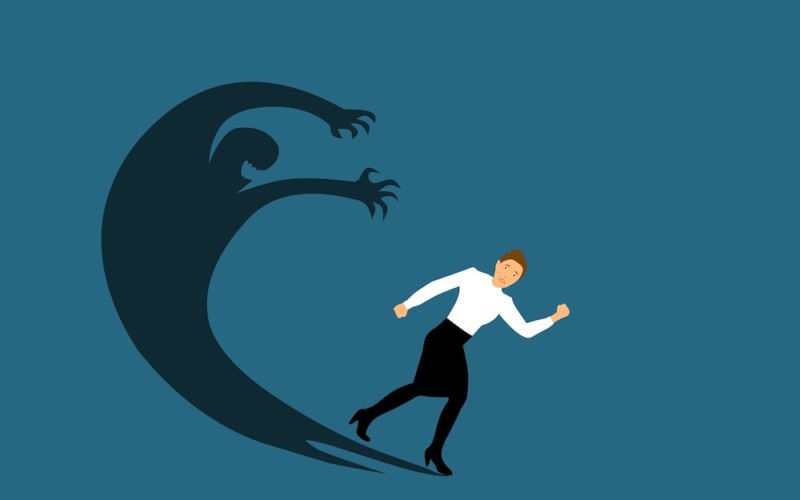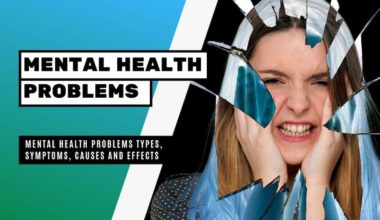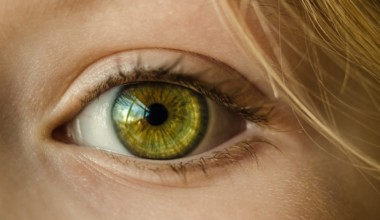Panic disorder is a type of anxiety disorder in which a person experiences excessive fear and worry. One of the most common symptoms is the experience of persistent and often unanticipated panic attacks. Panic attacks can be described as a combination of frightening physical sensations and distressing thoughts and emotions. These attacks can cause severe apprehension and discomfort, despite a lack of actual threat or danger.
Panic disorder can be diagnosed with or without agoraphobia. Agoraphobia is the fear of having panic attacks in situations where it would be difficult or embarrassing to escape. Many times, this fear can cause people to exhibit avoidance behaviors and can result in loneliness and decreased overall mental health.
Types of Panic Disorders
The types of panic disorders can be categorized as follows:
1. Panic attacks
Panic disorder is primarily categorized by experiencing fear and worry. People who are diagnosed with panic disorder can experience symptoms even when there is no actual danger present. They may experience nausea, heavy breathing and shaking, and may undergo physical reactions, such as nausea, heavy breathing feel that a threat or danger is looming upon them. These people also suffer from constant worry about when the next panic attack will occur.
2. Generalized anxiety disorder
Under this condition, people generally tend to feel worried all the time without any actual reason. They may constantly keep thinking of bad things that might happen. These anxieties are so abnormal they can negatively affect your daily routines.
3. Obsessive-compulsive disorder
Another type of panic disorder is obsessive-compulsive disorder. This disorder is categorized by unwanted behaviors and thoughts that you cannot control. For instance, your mind may be constantly worrying about whether you’ve turned off the stove when leaving home. You could also feel the constant need to perform certain tasks such as washing hands.
4. Phobias
This is when a person has an exaggerated fear of certain objects and situations, even if they aren’t dangerous. Common phobias include fear of insects, flying, and heights. Often, people with phobias try to avoid their trigger factors as confrontation can make their fear worse.
5. Social anxiety disorder
Social anxiety disorder or social phobia is when a person is extremely afraid of making a bad impression or getting a bad reputation. This causes them to be shy and avoid social interactions due to fear of embarrassment in public.
6. Post-traumatic stress disorder
Traumatic events such as near-death experiences or participation in a war may cause people to feel sad, frightened, and detached from other people. The negative effects of this disorder can last for a long time and can affect a person’s ability to live normally.
Symptoms of Panic Disorders
The onset of symptoms of panic disorder is often in late teens or early adulthood and affects more women than men.
Physical symptoms of panic attacks include:
- Excessive sweating
- Shaking
- Muscle contractions
- Inability to sleep
- Feeling exhausted
- Difficulty in breathing
- Nausea
- Accelerated heart rate
- Chest pain
- Increased blood pressure
- Chills or hot flashes
These symptoms of panic attacks typically occur spontaneously and peak within the first ten minutes before gradually subsiding. But they can last longer, and numerous panic attacks can occur one after the other.
When a person goes through repeated panic attacks, his/her emotional health and well-being can also get affected. Emotional symptoms of panic attacks include:
- Inability to focus
- Failure to relax
- Expecting danger
- Absent-mindedness
- Getting easily annoyed
- Feelings of tension
- Fear of going crazy
Causes of Panic Disorders
The exact cause of panic disorders or panic attacks is not known. But certain factors may play a role, such as:
- Genetics
- Going through intense stress
- Having a temperament that is more prone to negative emotions or becomes stressful easily
- Certain changes in the functioning of parts of the brain
Some research suggests that your body’s natural fight-or-flight response to danger is involved in panic attacks. For example, if a lion came towards you for the attack, your body would react instinctively and your heart rate would increase. Many of these same reactions occur during a panic attack, but can’t be said as to why panic attacks occur in response to harmless objects and situations too. Certain factors can also increase the risk of developing panic disorder. These include:
- Family history of panic attacks or panic disorder
- Experiencing major stressful events, such as the death or serious illness of a loved one
- A traumatic event, such as sexual assault or a serious accident
- Experiencing physical or sexual abuse during childhood
- Going to events such as divorce
- Smoking
- Excessive intake of caffeine
Effects of Panic Disorders
A typical panic attack lasts up to 10 minutes, during which a person experiences many emotional and physical symptoms, and headaches, discomfort, and lightheadedness are also common. But when panic attacks occur repeatedly, that is, they become chronic, the person can experience harmful long-term effects.
Tension, lack of sleep, and fear lessen the effectiveness of the immune system, which can increase the risk of getting an infection in the body. The increased blood pressure can also have a negative impact on the heart and kidneys. Individuals may also suffer from depression and difficulty eating.
People may also be so afraid of having more panic attacks that they live in a constant state of fear which can ruin the quality of life. Other effects of panic attacks include:
- Developing certain phobias, such as fear of leaving your home
- Developing certain medical conditions
- Avoiding social situations
- Issues coping at work or school
- Depression, anxiety disorders and other psychiatric disorders
- Increased risk of suicide or suicidal thoughts
- Substance abuse
- Financial problems
If panic attacks and panic disorders are not treated, it can damage all areas of a person’s life, that is, mental, physical, social and financial. This disorder can ruin the quality of life and overall well-being, which is why it is of utmost importance to receive medical consultation and treatment.
Furthermore, if our friend or family member is suffering from this disorder, it’s our responsibility to be kind and supportive to them. Moreover, we should encourage them to receive immediate medical assistance so that the symptoms of panic disorder do not worsen.





